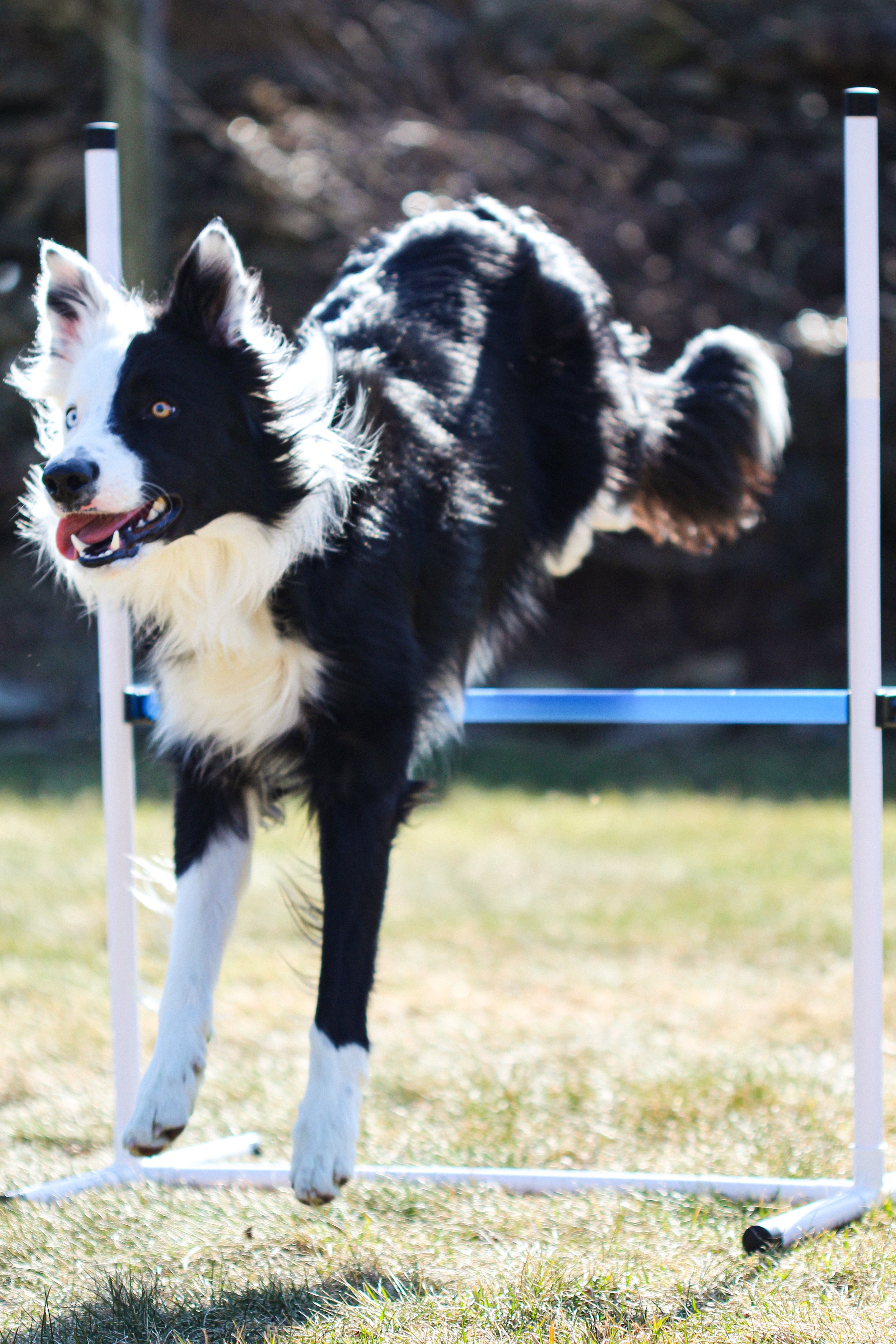As we enter a new year, we wanted to share a few ideas to help you create achievable goals in dog agility. Dog agility is more than just a sport; it's a thrilling activity that fosters a unique bond between you and your furry companion. Setting goals not only propels your dog's skills but also strengthens your teamwork. Here's a short guide to help you create achievable goals in dog agility:
 @claudetheportie
@claudetheportie
1. Know Your Dog's Abilities
Understanding your dog's strengths and weaknesses is crucial. Take note of their agility skills, such as speed, agility, obedience, and focus. This knowledge will guide you in setting realistic and attainable goals.
2. Establish Clear Objectives
Set specific, measurable, achievable, relevant, and time-bound (SMART) goals. For instance, aim for your dog to complete a specific course within a certain time frame or master a challenging obstacle.
3. Start Small, Aim Big
Begin with small, manageable goals that build your dog's confidence. Gradually increase the difficulty level as they progress. Celebrate each accomplishment, no matter how minor, to keep motivation high.
4. Focus on Training
Consistent and dedicated training is key. Break down complex maneuvers into smaller, trainable parts. Practice regularly and use positive reinforcement techniques to encourage desired behaviors.
5. Diversify Training
Expose your dog to various agility obstacles and environments. This broadens their skill set and adaptability, preparing them for different competitions and challenges.
6. Monitor Progress
Keep track of your dog's progress. Note improvements and areas that need more attention. Adjust your training regimen accordingly to address weaknesses and reinforce strengths.
7. Stay Flexible
Be adaptable in your goals. Dogs, like people, have good and bad days. Adjust expectations when needed, and always prioritize your dog's well-being and enjoyment.
8. Seek Expert Guidance
Consider enrolling in agility classes or seeking guidance from experienced trainers. Their insights and expertise can provide invaluable guidance and support for both you and your dog.
9. Health and Safety First
Prioritize your dog's health and safety throughout the training process. Ensure they are physically fit and consult a vet for any concerns or preventive measures.
10. Enjoy the Journey
Remember, agility training is a journey filled with joy, challenges, and camaraderie. Cherish the bond you build with your dog and relish every moment spent together, regardless of the outcomes.
By setting thoughtful and achievable goals, you pave the way for an exciting and rewarding journey in dog agility. Celebrate progress, stay patient, and savor the incredible partnership between you and your agile companion. Happy New Year!
SAFETY FIRST:
As always, you should make sure your dog is in good physical health before beginning any agility training. It’s a great idea to call your dog’s veterinarian to make sure they are cleared for any dog sport.
 @claudetheportie
@claudetheportie



